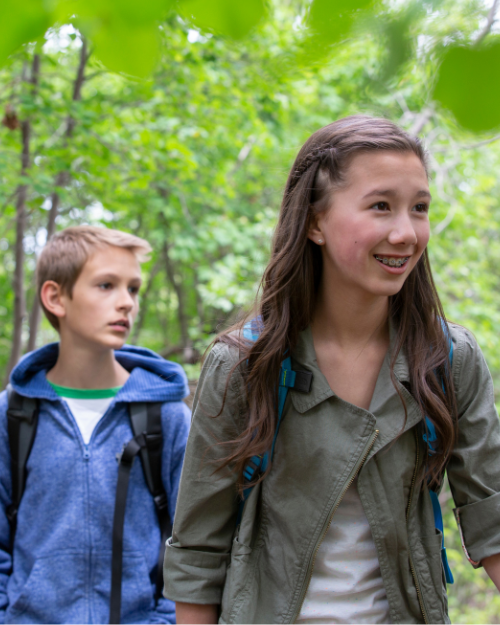A Time of Social & Emotional Shifts
School transitions come with immense change, growth, and self-discovery. This period of a student’s life “involves rapid physical, social and emotional development which can bring about feelings of loneliness, pressure of social acceptance, stress and a rise in depression and anxiety” (Arif Mahmud). With this in mind, social and emotional learning (SEL) becomes more important than ever. Our belief is that SEL is centered around the five areas of the heart: Secure & Calm, Compassionate and Kind, Gets Along with Others, Solves Conflicts Peacefully and Alert & Engaged. Through nurturing these five areas of the heart, students are equipped to embrace the challenges of transitioning from elementary/middle school to high school and thrive in this exciting and challenging period of their lives.
stress and a rise in depression and anxiety” (Arif Mahmud). With this in mind, social and emotional learning (SEL) becomes more important than ever. Our belief is that SEL is centered around the five areas of the heart: Secure & Calm, Compassionate and Kind, Gets Along with Others, Solves Conflicts Peacefully and Alert & Engaged. Through nurturing these five areas of the heart, students are equipped to embrace the challenges of transitioning from elementary/middle school to high school and thrive in this exciting and challenging period of their lives.
The ability to understand and manage emotions, achieve positive goals, show kindness and compassion, establish and maintain positive relationships, be present and engaged, and make responsible decisions are important for success not only while transitioning to high school, but throughout one’s life. The acquisition of these skills is not an individual effort though. As parents and educators it is our responsibility to collaborate with one another to model these behaviors and provide youth with the tools necessary to succeed. Research has shown that “SEL needs to be promoted at every level of the school system, including school leadership, classroom teachers, families and community partners”, so with this in mind, our collaboration can offer young people the tools they need to have the best possible chance to succeed, both academically and emotionally.
The Teenage Brain
The transition to high school is filled with academic and social challenges, not to mention the challenges that can come with navigating puberty. It is evident that puberty causes numerous physical changes to the body, but inside, the brain is developing and changing in a similarly monumental way. Here is a great video that discusses the teenage brain and breaks down how puberty and brain development impact children during their adolescent years.
 Friendships also have a significant impact on the teenage brain and are essential to nurturing the five areas of the heart and furthering students' SEL. This is particularly important during puberty, as teens seek more independence and more distance from their parents, and shift their focus to peer relationships. Check out this video for more information on friendships and their relationship to the brain. A primary focus of SEL is providing students with the tools to develop successful and meaningful friendships and relationships. During this developmental transition stage friendships are of the utmost significance in the positive development of children and adolescents. Although it can be difficult to let a child diverge from family and become more invested in peer-peer interactions, it is important to let them explore these friendships as deeply as possible. Research tells us that connectedness with others has a powerful influence on long-term health and well-being as well as positive academic trajectories. Parent-child relationships do of course remain imperative to social-emotional well-being during this period, but the ways in which we navigate and nurture connections may change.
Friendships also have a significant impact on the teenage brain and are essential to nurturing the five areas of the heart and furthering students' SEL. This is particularly important during puberty, as teens seek more independence and more distance from their parents, and shift their focus to peer relationships. Check out this video for more information on friendships and their relationship to the brain. A primary focus of SEL is providing students with the tools to develop successful and meaningful friendships and relationships. During this developmental transition stage friendships are of the utmost significance in the positive development of children and adolescents. Although it can be difficult to let a child diverge from family and become more invested in peer-peer interactions, it is important to let them explore these friendships as deeply as possible. Research tells us that connectedness with others has a powerful influence on long-term health and well-being as well as positive academic trajectories. Parent-child relationships do of course remain imperative to social-emotional well-being during this period, but the ways in which we navigate and nurture connections may change.
Is your child nervous about making friends? Try this list of questions that can be helpful for making friends at any age! Our comprehensive collection of Heart Mind Well-Being Resources also includes tips for supporting friendship skills and navigating big transitions for teens and tweens.
Download our full guide book, Supporting Your Child Through School Transitions, for a comprehensive and practical introduction to navigating big changes in your child's school life.
